campus2.0
During campus 2.0, the dynamically expanding movement of acar2 will present its first achievements and proud aims. Participants will elaborate on the neoanalog, perhaps the most exciting movement in design today.
acar2 is based on the idea that the classical crafts will gain a fresh strategic relevance in the context of smart materials and the need for intuitive interfaces. In combination with high-tech production methods for the creation of products according to individual requests the whole art of design and production will be written anew. The postindustrial design of acar2 will take evolutionary steps on the way from the old artefact towards the processual actefact.
Initial approaches to such exciting economic, functional, and aesthetic challenges will be illustrated by sixty works from eight academic institutions in the field of design. The acar2 network includes the Berlin University of the Arts, the department Interface Culture from the University of Art and Design Linz, the Media Art program of the University of Art and Design in Aarau, Switzerland. Add to this a network of French architects, a cooperation between Parsons The New School of Design, NY, and the Estonian Academy of Arts, Tallinn, the Cologne International School of Design, and the Interface Design program at the University of Applied Sciences Potsdam.
acar2 is based on an initiative of the Swiss Institute for Postindustrial Design HyperWerk of the HGK FHNW. Over the past six months the team around Prof. Mischa Schaub has demonstrated its subtle art of process design in the creation of a creative community.
campus2.0
The Berlin University of the Arts
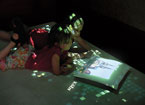
In response to an invitation from HyperWerk Basel, four programs in the Department of Design are working jointly within the framework of an interdisciplinary project to produce their contributions to acar2 and to explore the neoanalog theme. Participants are from product & process design, fashion design, visual communication and experimental media design.
more
campus2.0
University of Art and Design Linz
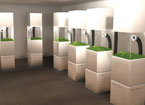
As contributors to the Campus exhibitions staged in conjunction with the 2005 and 2006 Ars Electronica Festivals, candidates for masters and doctors degrees in the Interface Cultures program at the University of Art and Design Linz’s Department of Media had the opportunity to present some of their interactive course-work projects, for which they received enthusiastic reviews from audiences made up of experts from around the world over the past two years. The thematic emphasis of the projects selected for 2007’s Campus 2.0 is on physical computing and hybrid interfaces. For this exhibition, the interface concept developed in the Interface Cultures program has been expanded via linkup to other artistic and artisanal disciplines such as textile design, industrial design and interior design. These works embody original, innovative concepts for interaction involving intelligent furniture, clothing and environments, interactive toys, pervasive gaming, new analog and digital musical instruments as well as technical, artistic and applied interactive prototypes and hybrid systems. www.interface.ufg.ac.at, www.interface.ufg.ac.at, www.interface.ufg.ac.at
Apply for the M.A. Interface Cultures study program!
Date for entrance examination interviews during the festival:
Monday, September 10th, 2007
To apply and to get more information about the study program and the application please contact: Dorothée Gestrich mail:dorothee.gestrich@ufg.ac.at
Exhibition Coordination: M.A. Dorothée Gestrich Staff Scientist Interface Cultures
more
campus2.0
The Academy of Art and Design (HGK) of the University of Applied Sciences Northwestern Switzerland (FHNW), Institute of Media Art Aarau, Switzerland
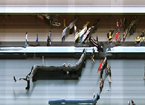
more
campus2.0
FH Potsdam - Interface Design
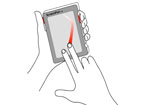
more
campus2.0
FABRIQUE. Network of architectures
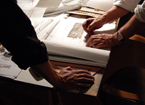
Christelle Chalumeaux, Katarina Dubravkova, Claude Valentin
We’ve established a network of architects, artisans and academicians who are collaborating on the ACAR2 project in Senones. Our aim is to conceptualize and construct possible, concrete, sociopolitically relevant spaces designed to be a setting for life, spaces that are centered on the practices and necessities of people living today. For us, architecture is an experiment in which we concentrate primarily on the aspect of the body and the gesture in order to conceive architecture from within and to observe the construction as it comes into being.This open platform is being utilized as a place of production and of critical exchange of knowledge and know-how. We consider interdisciplinarity today as an indispensable part of our development and of the quality of our projects. Depending on the needs of a particular assignment, we form a collective to resolve problems and surmount certain conceptual obstacles that arise during the course of the project, or at least to develop approaches to a solution. In addition to the members themselves, the network is being supported by pedagogical institutions, research labs and the following innovative facilities:
ENSAN, École Nationale Supérieure d’Architecture (school of architecture), Nancy
CRAI, Centre de Recherche en Architecture et en Ingénieurie (research center for architecture and engineering), Nancy
ICN Business School, a member of the ARTEM alliance, Nancy
HAHA architects and HOUOT agency for the design & creation of retail outlets, Saint Nabord
IGAE group of interior designers, Paris
Christelle Chalumeaux Architecte, Paris
more
campus2.0
Fashionable Technology - Parsons The New School For Design & Estonian Academy of Arts
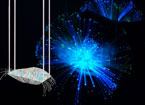
Fashionable Technology looks at end users as fashionable beings, attentive to style, aesthetics, branding, and the expressive potential of wearable technologies. It refers to all design objects that are associated with aesthetics, wearability, or some degree of mobility. Thus, it includes experiments with enhanced materials, technologies, or electronic textiles, as well as testing the effects of the interaction with the objects. It deals with the aspect of craft and technology in a novel manner focusing on aspects of a ‘new generation of wearables’.
The projects presented are executed during the collaboration studio called “Fashionable Technology” at Parsons The New School For Design in New York during the Spring 2007 semester led by Sabine Seymour and Alison Lewis and the workshop course also entitled "Fashionable Technology" at the Estonian Academy of Arts in Tallinn during the Fall 2006 semester led by Sabine Seymour. In a contextual analysis, developed in group projects, the aspects of communication, aesthetics and functionality with a specific focus on the idea of dynamic surfaces were revealed and further defined. This required a parallel understanding of embedded system design, networked environments, and interdisciplinary design issues that validated the feasibility of such (wearable) dynamic surfaces.
The diverse background of students in the studio coming primarily from the department Communication, Design, Technology at Parsons offered the ability to play with physical computing and design at the same time. The students from the textile department in Tallinn brought a fantastic insight of textile design using the Estonia as a backdrop for their projects.
Institutions
Communication Design + Technology at Parsons The New School For Design is a department and a collective design force of over 700 students and faculty engaged in work ranging from typographic exploration to geek graffiti, book design to game design, information visualization to animation. The programs in Communication Design (CD) and Design and Technology (DT) form a dual curricula that emphasizes experimentation, collaboration and social activism in the design of media experiences and new narratives for all kinds of people, in all kinds of places, around the world.
The Department of Textile Design at the Estonian Academy of Arts focuses on two main areas of specialty know-how - weaving and fabric printing, with specialisation on creating clothing and furniture fabrics. Specialty subjects will introduce the student to designing unique textiles and industrial products, interior decoration principles, printing, dying and weaving techniques, knitting, felting, material studies, history of textile and applied arts, and ethnography.
more
campus2.0
The "Fischtisch" group
more
campus2.0
The "structurate (tm)" group
more
campus2.0
KISD - Köln International School of Design/Analogic Scounting
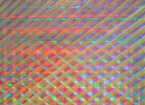
more
campus2.0
HyperWerk Institute for Postindustrial Design HGK FHNW
more
campus2.0
Symposium - talks on the neoanalog
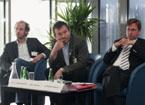
more